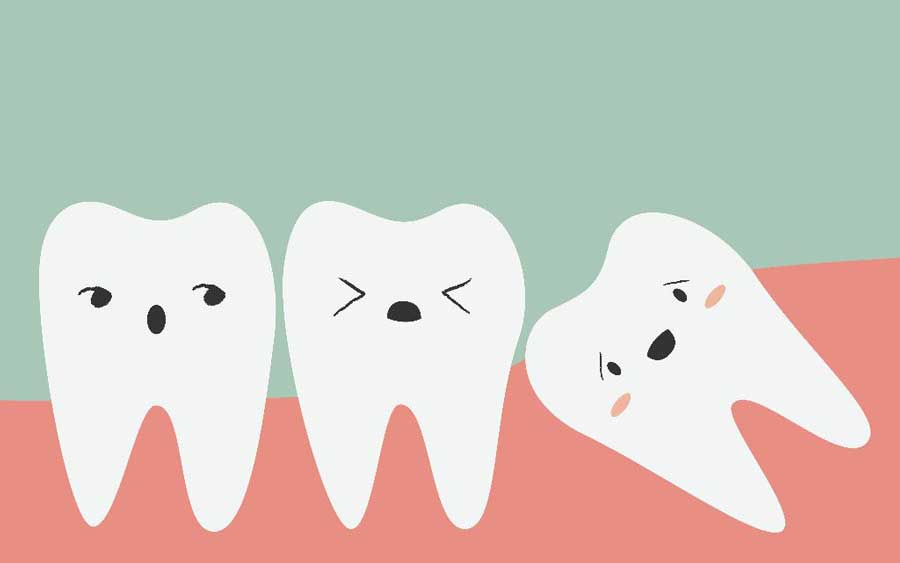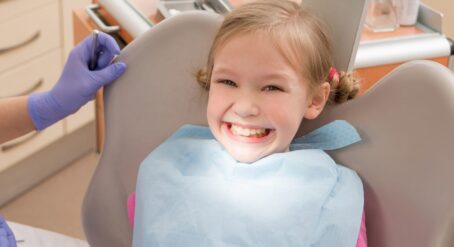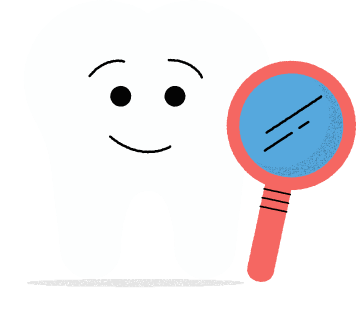For many of us, the first time we hear about having an impacted tooth is at the dentist. In the early stages, you may not realise that you have an impacted tooth as it may not affect your bite or cause pain. However if left untreated it can lead to complex issues that are difficult to treat. If your dentist or orthodontist has just informed you about an impacted tooth, the following information will help you better understand the diagnosis and your treatment options.
What is an impacted tooth?
An impacted tooth is one that fails to erupt into the mouth at the expected time. The full set of permanent teeth (excluding the wisdom teeth) usually can come through between the ages of 10 to 14 years. Should you or your child have delayed loss or delayed replacement of a baby tooth, you should see a dentist or orthodontist to determine the cause of the delay.

Types of impacted teeth
There are several types of impacted teeth, depending on the direction of growth below the gum line. The types of impacted teeth you may see include:
-
Horizontal impaction is where a tooth grows at roughly a 90 degree angle to the rest of your teeth, often placing pressure on the roots of adjacent teeth
- Vertical impaction is where the tooth is erupting in the correct direction, but often due to crowding, is too close to the neighbouring teeth which then stops it from erupting.
- Angular impaction is where the tooth grows at an angle, causing it to be blocked below the gum line. This is again usually due to crowding.
- Partial eruptions are usually a form of angular impaction. This is where the tooth begins to push through the gums but is stopped by its close proximity to other teeth.
Impacted tooth: signs and symptoms
The most common presentation of an asymptomatic impacted tooth is the presence of a baby tooth when it should have been lost, or the lack of eruption of a replacement adult tooth. A visit to the orthodontist for an assessment, which will often require a panoramic X-ray (OPG) and or Cone Beam Computed Tomography (CBCT) to be taken, will clearly demonstrate the position of the tooth/teeth in question. Appropriate treatment can then be undertaken to manage the situation.
Other signs you may have an impacted tooth include:
- Pain or tenderness on the gums
- Redness and swelling of the gums
- Difficulty opening the jaw or mouth

What are the risks of an impacted tooth?
If left untreated, an impacted tooth can cause a number of issues with the adjacent teeth. Impacted teeth may or may not cause discomfort or pain, however, despite this, the problem tooth may make it very difficult to effectively clean the surrounding teeth and gums. In the worst-case scenario, this may lead to the eventual loss of adjacent teeth due to decay or gum disease.
What type of braces do you get for impacted canine teeth?
Impacted canine teeth affect around 2% of Australians. For those younger patients whose teeth, mouth and jaw are still growing, a set of metal or ceramic braces will can be used to reposition the teeth and make more room for the one that’s impacted. However, it’s important to note that while there are many different treatment options that can help an impacted tooth, you need to find the one that is right for your condition, which is why it is important to always seek the advice of a specialist orthodontist.
Can you use clear aligners for impacted teeth?
Clear aligners do not move teeth in the same way as as braces, therefore, they are rarely used for this dis-impacting teeth, unless the problem is extremely minor. However, depending on your treatment needs and timing of the intervention, they may considered as part of an overall treatment plan. As significant tooth impactions are often challenging to treat, it is always important to seek the advice of a specialist orthodontist.
Can orthodontics help an impacted tooth?
The orthodontic approach to an impacted tooth generally depends on your age and the angle or direction that the impacted tooth is growing and how successfully the impacted tooth can be brought into the arch.
If diagnosed early enough, your orthodontist may help correct the development of an impacted tooth by early removal of appropriate baby teeth, possibly combined with the placement of a space maintainer or expander appliance.
Sometimes, an impacted tooth may erupt by themselves if enough space is created for its eruption.
If the impacted tooth is located in a severely ectopic location, then surgical intervention may be necessary, to expose the impacted tooth. Orthodontic treatment, usually involving braces, is then required to control the path of eruption of the impacted tooth, to minimise damage to the tooth itself, and the surrounding teeth.
In certain cases, the impacted tooth may not be able to be salvaged and may need to be removed.
The best way to receive a full diagnosis and treatment plan is to have a consultation with a specialist orthodontist. They will be able to advise you with appropriate information regarding the impacted tooth/teeth, and the best treatment plan to manage the situation. Specialist orthodontists have the knowledge, experience and expertise to manage all types of orthodontic problems.
You can find an orthodontist near you by using our Finder Tool.









